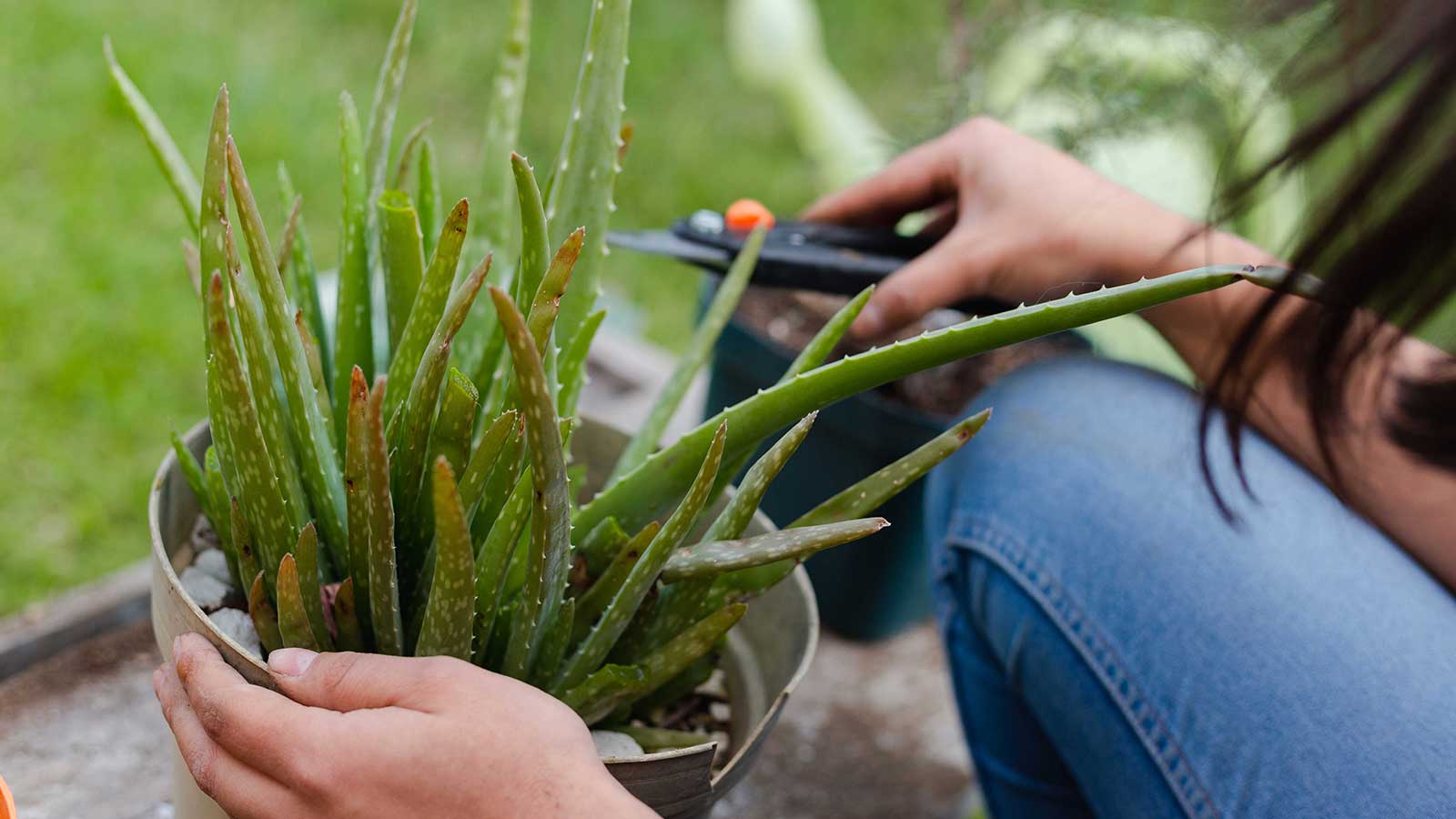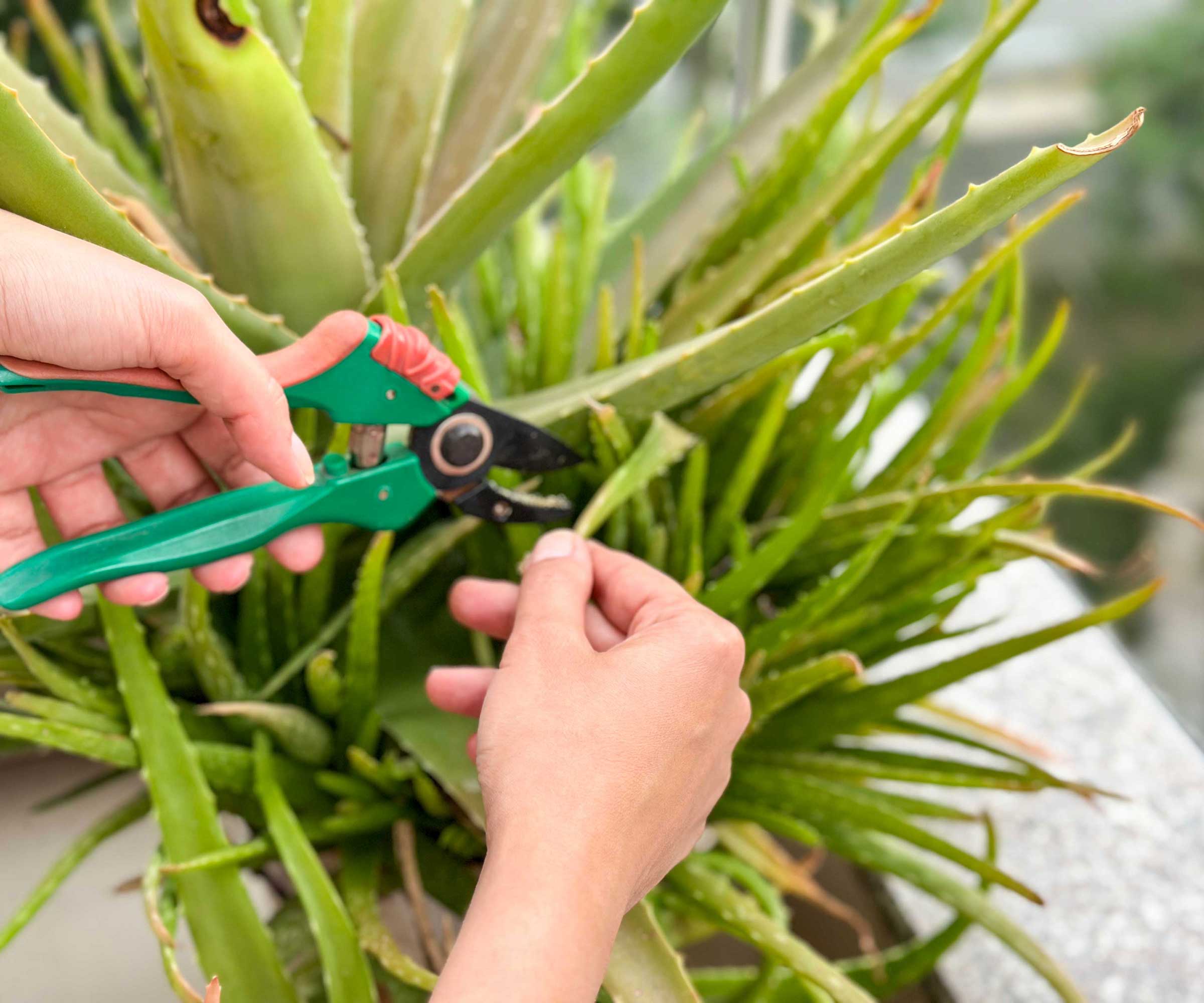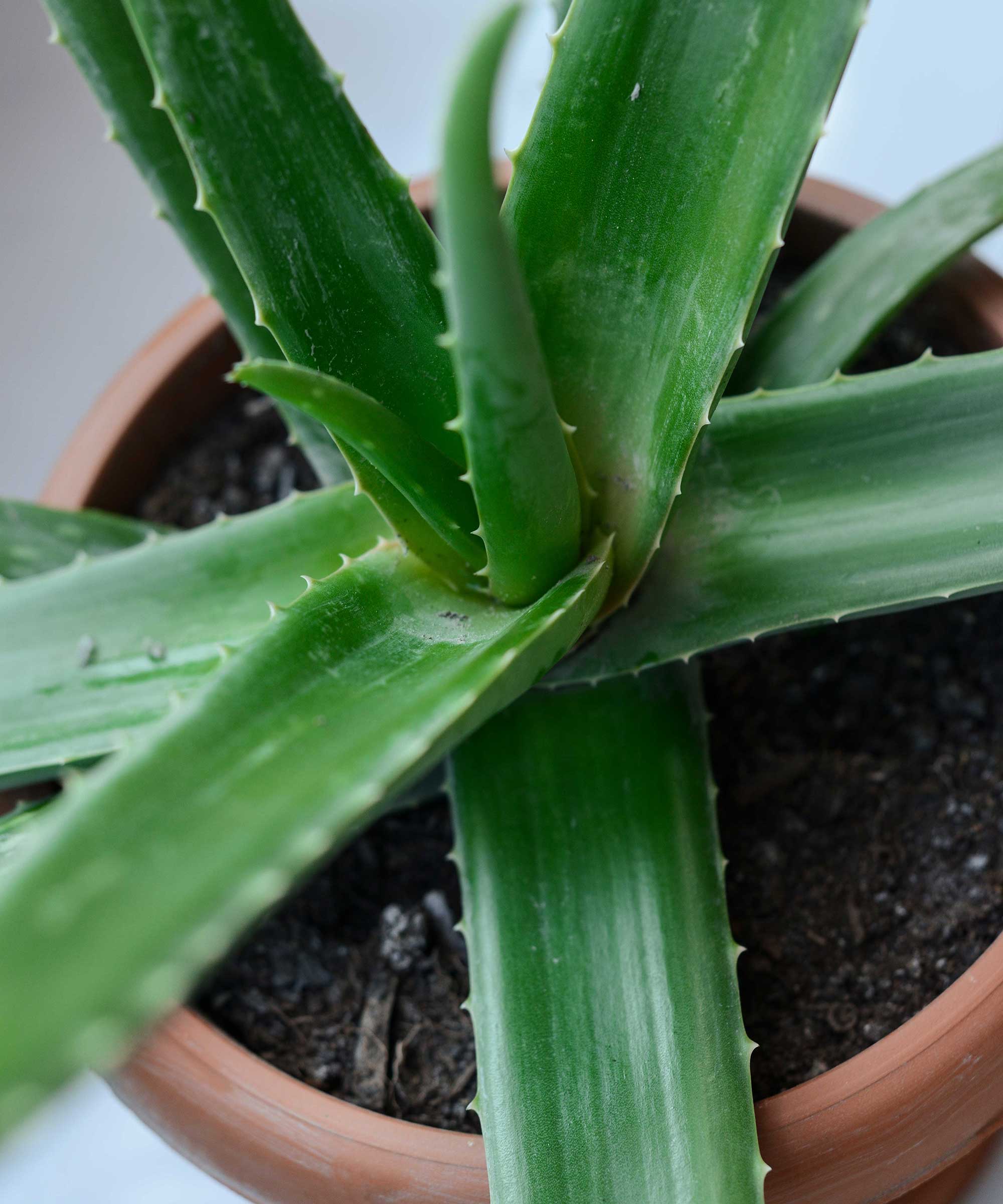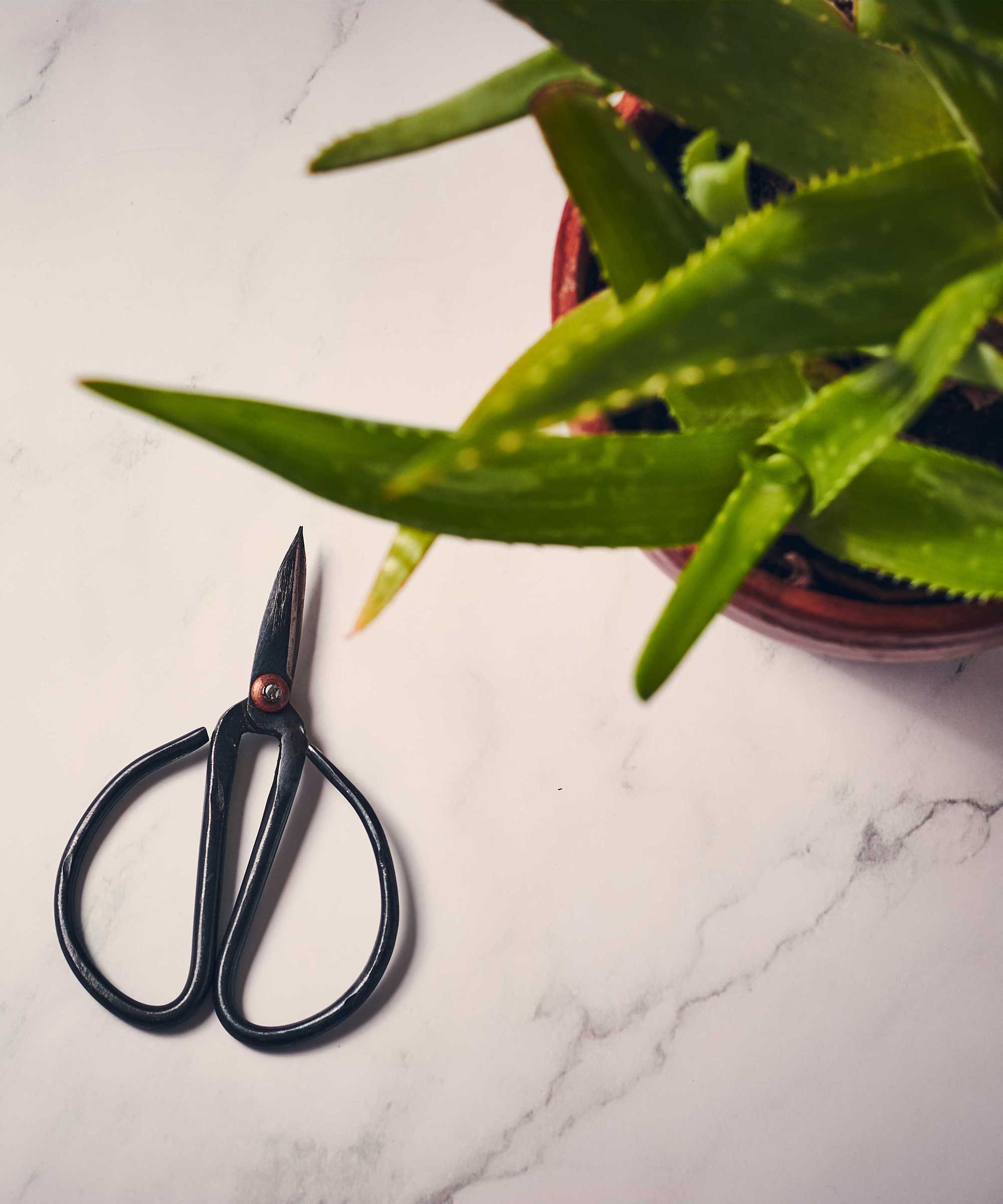How to prune aloe vera – pro tips for these popular succulents
Aloe vera can benefit from a trim now and again, but it's important to get the technique right


Q: A friend has recently given me an aloe vera plant for my home office. It is currently quite small and it looks healthy, with upright, green leaves. I have never had one before and am wondering if it will benefit from pruning as it grows. If so, when is it best to do this, and should entire leaves be removed from the base?
A: Although you probably won't need to prune your aloe vera just yet, there are a few key reasons why you may need to in the future.
First, pruning can remove any dead or dying leaves that might occur. This allows the plant to focus its energy on new growth, points out Kayla Gajdascz, the founder of Mental Houseplants. What's more, eliminating parts of the plant that may be diseased can prevent the spread of infection, she adds. Naturally, doing so will improve the appearance of the plant, too.
Pruning can also be useful for size management, especially as your plant matures. In other words, it helps maintain an attractive shape, by preventing the plant from becoming too large or sprawling, Kayla says. Not only this, but it also provides you with cuttings for unexpected uses of aloe vera plants.

Kayla Gajdascz is the co-founder and president of Mental Houseplants, a company dedicated to spreading the positive impact that plants have on our mental health. One way that the company does this is by partnering with NAMI, the National Alliance on Mental Illness (the Massachusetts chapter), and donating a portion of every sale to them.

Pruning can benefit aloes in multiple ways
Expert tips for pruning aloe vera
Pruning these succulents correctly is essential to help them thrive, which means using the proper method and doing so at the optimum time of year.

Tidy up the appearance of your plant by removing dead leaves
A quick guide for pruning aloe vera
'The first step is to inspect the plant,' says Kayla. 'Look for dead, dying, or damaged leaves which are typically at the base of the plant and may be discolored, dried out, or wilted.' Remember, there are various reasons for an aloe plant to turn brown, so consider adjusting your care routine to prevent the problem from happening too often.
Then, using sterilized tools, cut the unwanted leaves off at the base where they join the main stem, Kayla continues. 'Make a clean, angled cut close to the stem, but be careful not to cut into the stem itself.'
Design expertise in your inbox – from inspiring decorating ideas and beautiful celebrity homes to practical gardening advice and shopping round-ups.
Cutting at an angle prevents water from sitting on the cut surface, which can lead to rot, explains Tony O'Neill from Simplify Gardening.
If you need to decrease the size of your plant, you can remove one or two of the larger, outer leaves from the base. Avoid removing fresh growth from the center.
'After pruning, avoid watering for a few days to let the cuts heal and prevent rot,' Tony adds.
Also, ensure that the aloe plant receives adequate sunlight, says houseplant expert Vladan Nikolic. 'More light means more photosynthesis. This helps in the healing process and encourages new growth.
'Give the aloe plant some time to recover,' Vladan adds. 'Patience is key, as plants may take a little while to adjust.'
Top tip: 'Focus on removing only the leaves that are necessary,' Kayla advises. 'Over-pruning can stress the plant.'

Tony O'Neill is a gardening expert, author, and educator. With a thriving YouTube channel boasting 405,000 subscribers and over 1.4 million monthly views, along with his award-winning website Simplifygardening.com, he shares his passion for gardening and sustainability. He has also authored Composting Masterclass, Your First Vegetable Garden, and Simplify Vegetable Gardening, empowering individuals to cultivate their own green spaces.

Vladan Nikolic, otherwise known as Mr. Houseplant, is a houseplant expert with over 10 years of experience. He is the founder of the houseplant care blog MrHouseplant.com and also an influencer who helps newcomers in the houseplant world become great plant parents. You can find him on Instagram, TikTok, Youtube, Facebook, Twitter and Pinterest.

Remove older leaves from the outside of the plant if needed
The best time to prune aloe vera
'Aloe vera doesn't require frequent pruning,' says Kayla. 'Do it as needed, typically once a year or when you notice dead or damaged leaves.'
Vladan advises doing so during the growing season, which is usually in spring or early summer. 'Avoid pruning during the dormant winter months,' he adds, explaining how this can slow down the plants' recovery process.

Always use clean tools to prune your plants
FAQs
What tools should you use to prune aloe vera?
'You’ll need sharp, clean scissors or pruning shears,' says houseplant expert Kayla Gajdascz. 'Ensure they are sterilized to prevent the spread of disease.'
These popular pruners from Fiskars at Amazon are ideal for the job.
'An optional tool is gloves,' she adds. These are useful if you have sensitive skin, as aloe vera gel can be irritating to some people.
How can you harvest the gel from pruned aloe vera leaves?
Aloe vera gel is known for its healing properties. 'If you're pruning healthy leaves and want to use the gel, cut a leaf and store it upright in a container for a few hours to let the yellow sap (which can be irritating) drain out,' recommends houseplant expert Kayla Gajdascz. 'After this, you can split the leaf and extract the clear gel.'
Don't forget that you can also prune aloe vera for propagation purposes. 'If you remove offshoots (pups), you can pot them to grow new aloe vera plants,' Kayla says. 'Ensure they have some roots attached and let them dry for a day or two before potting in well-draining soil.' Alternatively, you can grow new plants from leaf cuttings.
As well as aloes, many other houseplants will benefit from a trim to stay looking their best. For instance, you can prune money trees and monsteras to remove any discolored leaves and keep your indoor garden looking beautiful.

Holly started writing about gardening five years ago, and she is a regular contributor to Homes & Gardens. She has also written many gardening features for Woman & Home and Real Homes, too. She has previous experience as a professional gardener, where she helped to plant and maintain private gardens. Holly has also looked after allotment plots over the years and loves to grow her own flowers and veggies from seed. In her spare time, she enjoys visiting local gardens, botanical drawing, and tending to her ever-growing collection of houseplants.